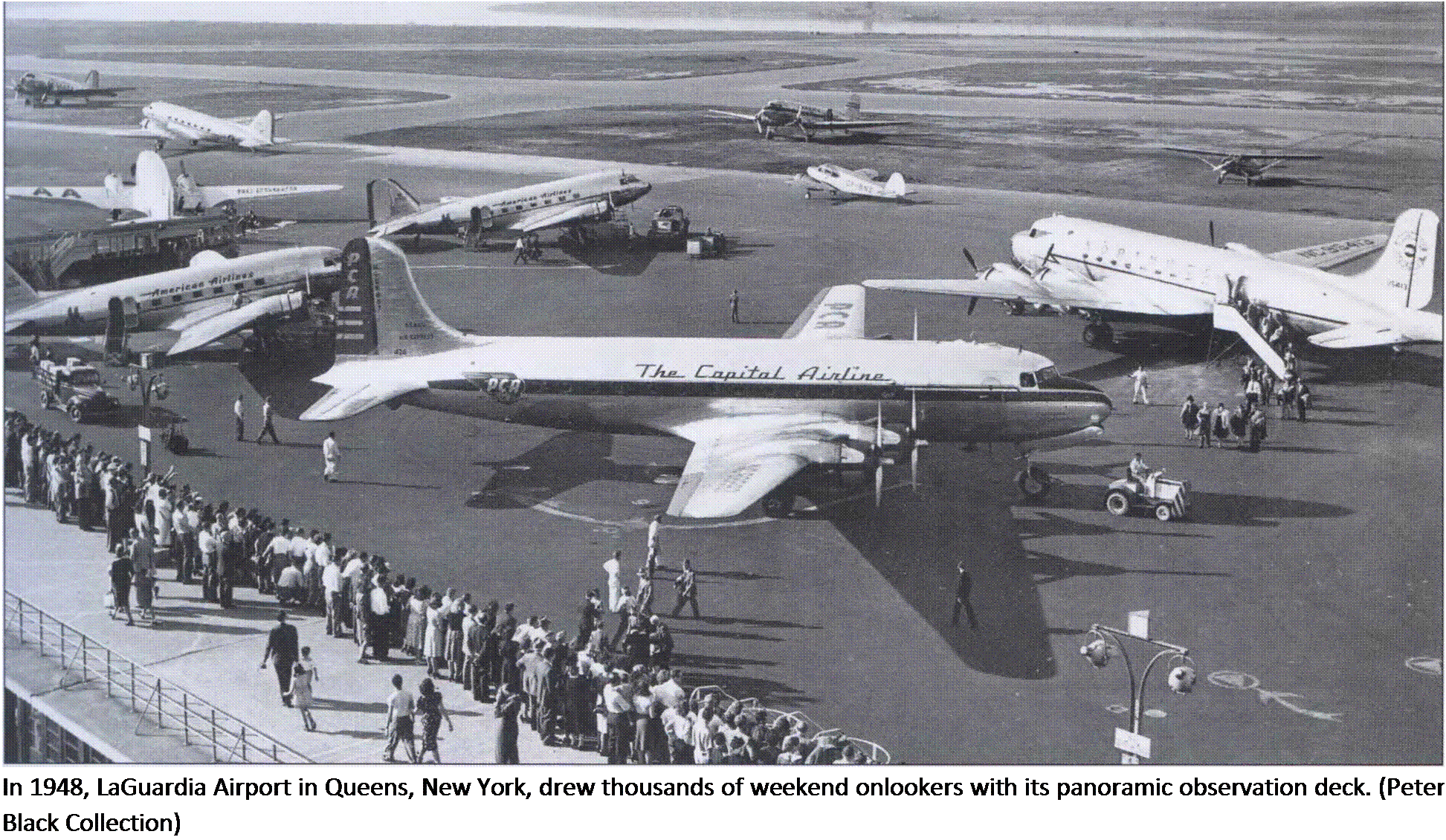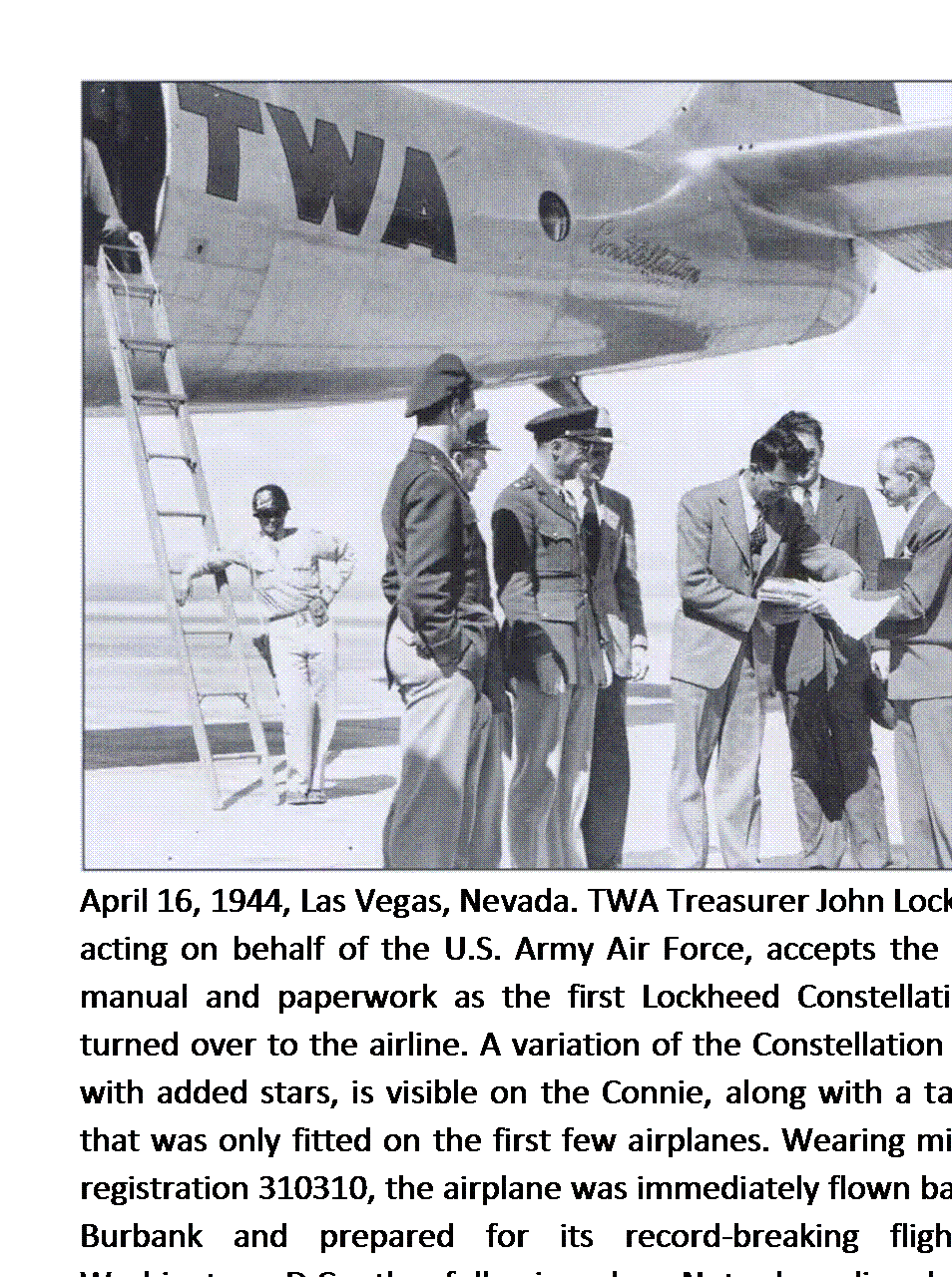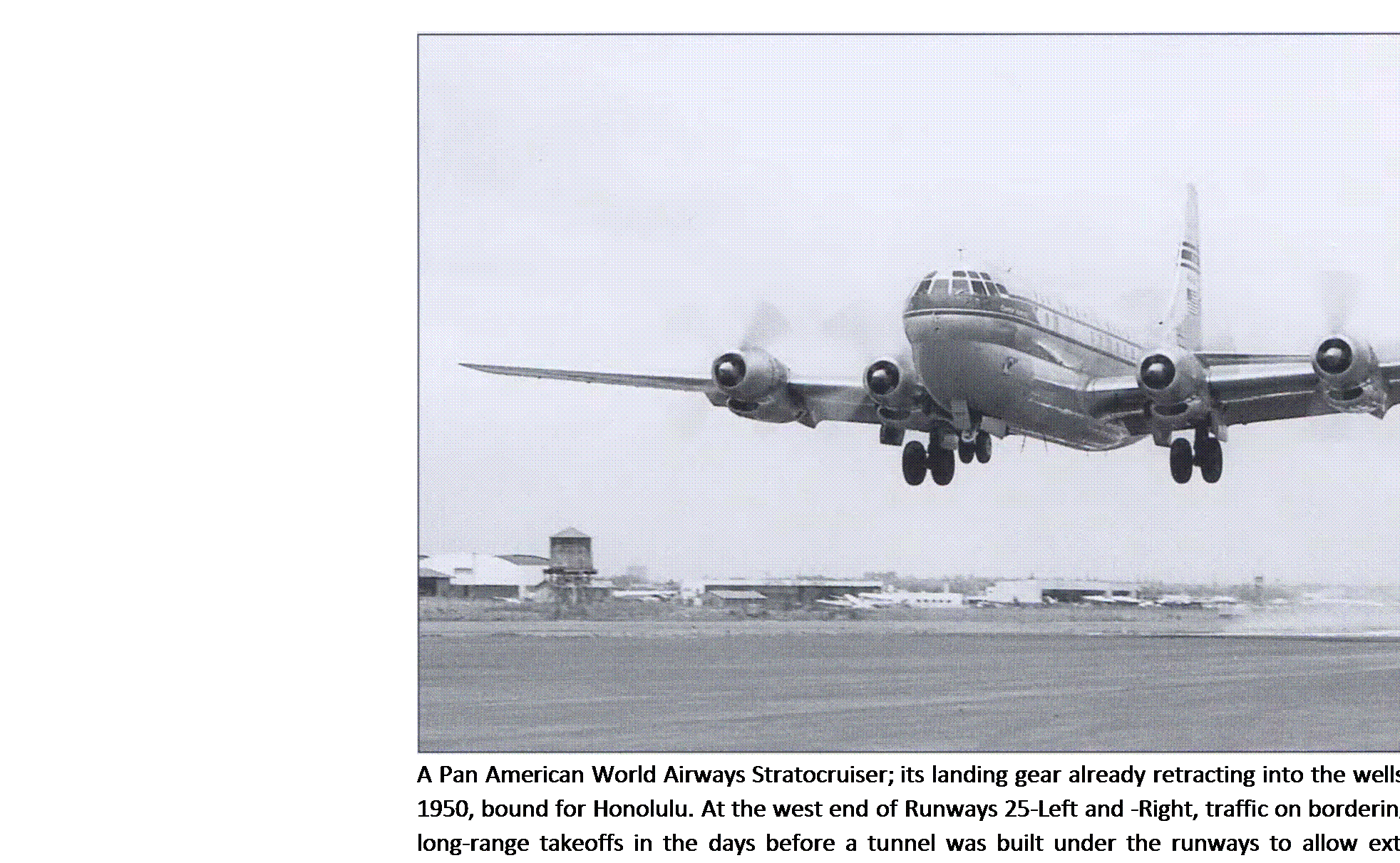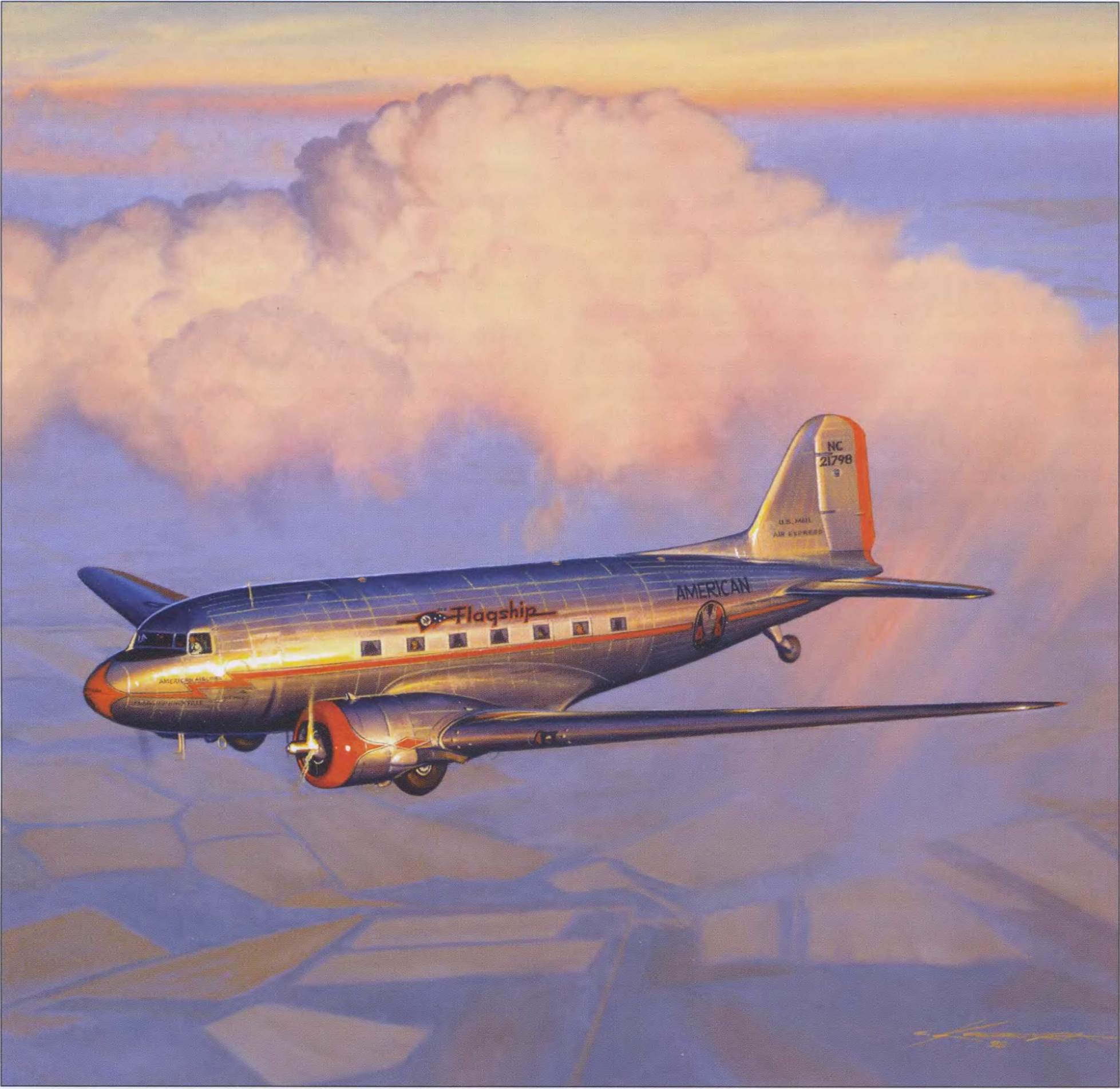(1946-1950)
|
|
A |
fter World War II ended, the world entered an era of recovery and rebuilding. Commercial air transportation began to expand using fleets of surplus military transports and leftover prewar passenger aircraft. Despite
there being a number of false hopes with giant new airliner concepts that never came to fruition, the promise of bigger and better airliners was looming on the distant horizon. Maybe someday, there would even be jets.
Evolution of Post-World War II Airliners—
USAAF Surplus
The end of World War II saw a massive transfer of aircraft to the airline industry, mostly Douglas C-47s reconfigured to passenger layouts. In addition to civil DC-3s returning from military service, more than 9,000 C-47s were available to choose from, at prices less than $10,000 each.
In addition, 1,100 Douglas DC-4s, built as C-54s for the Army and R5Ds for the Navy, became available and were purchased by airlines in large numbers. American Airlines acquired 50 C-54s at the standard government price of $90,000 each, and spent an additional $175,000 per airplane to install passenger interiors. Pan Am, which had ordered DC-4s in 1940, went on to fly 90 of the type, while other carriers purchased smaller numbers.
Powered by four Pratt & Whitney R-2000 engines, the DC-4 rumbled along at a maximum speed of 227 mph and possessed near-transatlantic range, but was chiefly used on shorter domestic routes, carrying 44 passengers in a standard configuration, plus two pilots and one or two flight attendants. In addition to American, surplus DC-4s were acquired early on by Delta, Eastern, Northwest, Pan Am, TWA, and United.

 |
As the war ended, Douglas built a small batch of civil DC-4s before concentrating on production of its new DC-6, which airlines would begin receiving in


1947. Western Air Lines was a factory-delivery DC-4 customer. At Burbank, California, Lockheed began producing civil variants of its Constellation after diverting the type to the military during the war. C-69 Constellations were handed over to TWA and Pan Am, both hungry to replenish their small fleets and add capacity as postwar prosperity began rapid growth in air travel.
On U. S. domestic routes, TWA gained a significant advantage over its domestic rivals, as even the ex-military Connies were on a par with the DC-6s yet to arrive. Fifteen of these larger, more-modern airliners required less modification work than the C-54s and had the advantage of pressurized cabins that allowed them to cruise at higher altitudes to avoid bad weather. Eighteen-cylinder, Wright Cyclone R-3350 radial engines permitted cruising altitudes of 21,000 feet. Accommodations for up to 57 passengers were provided on daylight flights, with sleeping berths added for longer night and transatlantic flights.
The type was used to inaugurate TWA’s transatlantic service in February 1946 and quickly spread to domestic routes as well, supplementing five four-engine Boeing 307 Stratoliners that were returned to TWA from military duty in 1944. The C-69s were followed by civil-built Model 049 Connies. TWA also acquired 15 C-54s for transatlantic use through purchase and lease contracts.












